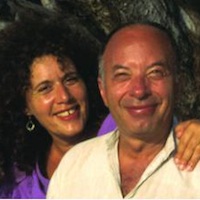We often wonder what our lives would be like without meditation or mindfulness.
We were talking with our partner, neuroscientist and yogi Brian Jones, about this recently who said, “With all the mass overstimulation and continuously heightened levels of stress it’s easy to see why we’re all going crazy. The modern world demands so much of our attention that we forget who we truly are in our deepest sense.”
We’re sure you know what we mean: the demands and busyness of life can have a toll on anyone. So what to do? How to live in this world with sanity and ease? The wise yogis said that happiness is our birthright but where is this happiness found?
What, out of all the things we can get in this whole world, will give us the most happiness, joy, peace of mind, self-friendship, clarity, insight, presence, is totally free but invariably ignored? Yes, you got it, it’s meditation—the most invaluable gift you could ever give yourself! We look everywhere for peace and spend a fortune thinking something will give us happiness while it is, and always will be, inside us.
Not only that, but whatever we get we can lose, but what’s inside of us we have always! How outrageous!
Actor Ed Begley, Jr., from our award-winning book Be The Change, points out that:
If stuff made you happy, there would be nothing but happy people living in Bel Air and unhappy people living in Fiji where they have nothing, but I have been to Fiji and there are plenty of happy people there. I have never seen a hearse with a luggage rack on top. We have got to get away from stuff and appreciate what is here.
Meditation is in the news. Any self-respecting business uses meditation and mindfulness to combat stress, major newspapers and magazines carry stories on the benefits of meditation with tips from famous film stars, and cross-legged yogis and Buddhist monks can be seen in adverts for everything from computers and credit cards to insurance.
Respected Buddhist meditation teacher Mingyur Rinpoche asks:
Who makes problems? We humans. And who is the controller of the human? The mind. And how to control the human mind? Through meditation. If you can control the pilot, then the pilot can control the plane.
Mindfulness is being aware of whatever arises in your mind and body, sensations, feelings and thoughts. It’s not about trying to change anything but non-judgmentally and gently accepting it as it is. However, anyone first coming to meditation can be met with a plethora of advice and techniques that may baffle or confuse: Where to go? What to do? Which is best? How to start? How to chose between TM, mantra recitation, kundalini, vipassana, insight, witness, breath awareness, shamata, visualization, MBSR, metta, and more?
The best way is to try them and see what works for you—we’re all different! It’s important to remember that a technique is only a way to something, it’s not the something itself. True meditation is spontaneous, natural, arising from within, while the technique is simply the learnt method that helps us have that experience.
All techniques are designed to help calm the mind, bring our attention inward, and focus in just this present moment so that the experience of meditation occurs naturally.
Author and meditation teacher Sylvia Boorstein emphasizes that:
The point of meditation is to keep the mind free of confusion. Meditation, past calming our nerves, past being good for our blood pressure, past allowing us to work out our own internal psychological dramas, which it does, past helping us to get along with our kin and our community, is a way of really deeply seeing the truth that the only way to ameliorate our own suffering and the suffering of the world is to keep our minds clear.
The equation, therefore, is simple: The more meditation becomes a part of your life, the more you change and evolve; the more you change and evolve, the more society is transformed and the world moves into a wiser and more loving place to be. And all you have to do for this chain of events to occur is to sit still!
Practice:
Start right now, where you are sitting as you read this. Do this for just 3-5 minutes.
Become aware of your body. Scan your body from head to toes, acknowledging how it feels, and where there is tension or ease.
Become aware of your feelings, thoughts, and any sensations.
Become aware of your breathing, and just watch your breath as it enters and leaves for a few moments.
Now take a deep breath and let it go.
Love elephant and want to go steady?
Sign up for our (curated) daily and weekly newsletters!
Editor: Bryonie Wise
Photo: Flickr


 Share on bsky
Share on bsky




Read 2 comments and reply